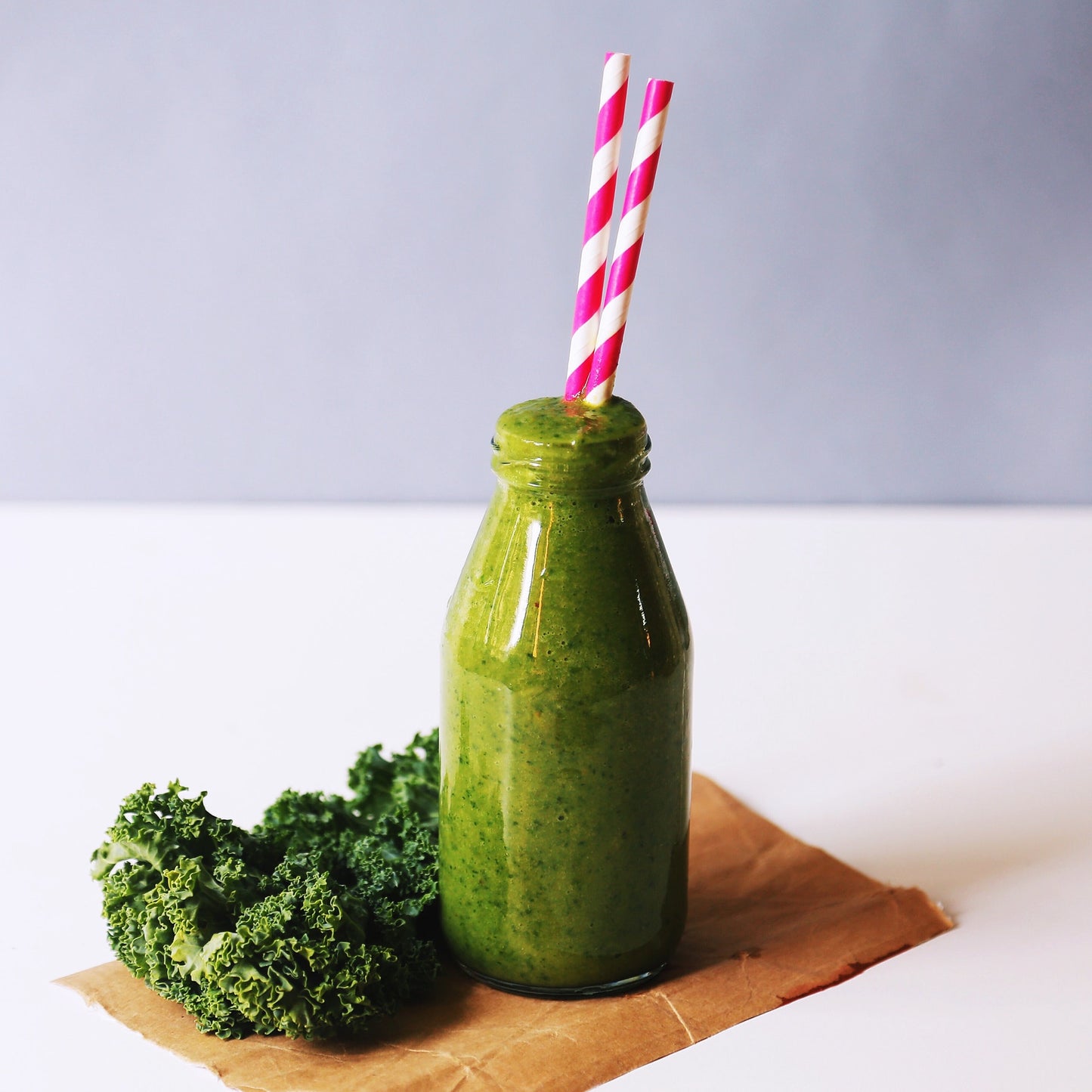
Whether you want to fuel your muscles post-workout, add more protein to a vegan diet, or start your day with a healthy meal, protein smoothies and bowls are the perfect choice.
If your usual smoothie consists of a protein, some fruit or juice, and ice, it’s time to take things up a notch! With the right ingredients, your smoothie can easily become the healthiest, most nutritionally dense meal of your day.
Here are seven easy ways you can transform your Growing Naturals protein smoothie or smoothie bowl into a nutrition powerhouse.
1. Sprinkle in some seeds.
Seeds aren’t just for the birds—they’re for your smoothies, too. Small but mighty, just one or two tablespoons are loaded with vitamins, minerals, and fiber.
Some of the best include:
- Chia. Just one tablespoon of chia seeds contains 4 grams of fiber, which helps you feel fuller and may help control hunger throughout the day. You also get slightly over 2,000mg of anti-inflammatory omega 3 fatty acids!
- Sesame. This type of seed is high in copper, which helps the body form red blood cells and absorb iron.
- Hemp. Considered one of the most nutritious seeds, hemp seeds are loaded with omega 3 fatty acids, protein, fiber and minerals like phosphorous, potassium, magnesium, iron and zinc!
- Flax. Flaxseeds are the number one source of lignan, a phytonutient rich in heart-healthy antioxidants. They are also an excellent source of omega 3 fatty acids, which promote cardiovascular health.
- Sunflower. This popular snack is high in Vitamin E, a powerful antioxidant and immune system supporter.
- Pumpkin. Raw pumpkin seeds contain a powerful mixture of antioxidants and minerals. They’re uniquely rich in tryptophan, which the body converts into serotonin, a calming neurotransmitter.
- Poppy. Poppyseeds contain polyunsaturated fatty acids—including omega 6 and 3 and are rich in minerals like calcium, manganese, magnesium and phosphorous.
Another plus? Most seeds have a subtle flavor that is not easily detected when blended with fruit, protein powder, and other ingredients.
2. Add some spice.
Spices in smoothies not only add health benefits, but they can enhance the flavors of your smoothie. A few of the healthiest to experiment with include:
- Turmeric. A powerful anti-inflammatory, curcumin, is found in turmeric, a spice that has been used for centuries in China and India. This brightly colored powder tastes delicious in smoothies with carrots and mangoes.
- Cinnamon. Both delicious and nutritious, cinnamon is rich in fiber which helps control blood sugar levels. Ground cinnamon tastes great in smoothies with dairy-free milk bases, bananas, and berries.
- Cayenne. This hot and spicy pepper will kick up the flavor of any smoothie. Studies have shown cayenne may also increase metabolism. It is also used to help aid digestion and stomach upset.
- Ginger. Fresh ginger root is a go-to for queasy stomachs or motion sickness and can alleviate digestive issues. Ginger has a pleasant taste that goes well with citrus, tropical fruits or juice.
3. Go green.
Adding leafy greens to your protein smoothies is an easy way to get extra servings of vegetables into your diet. If the thought of drinking blended lettuce makes you cringe, don’t worry—the fruits and other ingredients of your smoothie overpower the greens, so it won’t taste like you’re drinking a salad.
Leafy green vegetables are loaded with phytonutrients, antioxidants, and necessary vitamins. A few of the best to add to smoothies include:
- Spinach. One of the most nutrient-dense vegetables in the world, spinach is an excellent source of Vitamin K, which helps maintain bone health. If you’re new to green smoothies, a handful of spinach to a fruit protein smoothie is an easy and tasty start.
- Kale. Another superstar of the green family, kale is rich in Vitamins K, A, and C and provides numerous health benefits. If you’re not used to the strong taste of kale, mix it with sweeter fruits or start with small amounts at first.
- Lettuce. Choose leafy green lettuces, such as romaine, green leaf, and butterhead for your smoothies—they offer more nutrients and antioxidants than iceberg.
- Herbs. Herbs have been used for centuries for their healing properties and are rich in vitamins and minerals. Cilantro, mint, basil, and parsley work particularly well in smoothies.
4. Show your gut some love.
Probiotics are healthy forms of bacteria that live inside your gut. These microorganisms help reduce the bad forms of bacteria that grow in the digestive tract and work to promote a healthier digestive system (in other words, bye-bye, gas and bloating). They can also help prevent and treat yeast infections.
Probiotics are found naturally in yogurt, making it easy to add them to your protein smoothie. Look for yogurt with live, active cultures to get the greatest health benefits.
If you want to skip dairy products, probiotics are also found in foods like sauerkraut and pickles—great for your gut, but not so great for smoothies. Luckily, you can purchase vegan probiotic powder.
5. Choose healthy fats.
Just as there are good and bad types of bacteria, there are also good and bad types of fat. Too much of the wrong type of fat, like saturated fats and trans fat, can lead to serious health concerns like obesity and cardiovascular disease. Healthy fats, on the other hand, actually improve the health of the heart by helping lower HDL (bad) cholesterol and raising LDL (good) cholesterol levels. Combined with protein, fats also help your stomach feel satiated.
Healthy fats include monounsaturated and polyunsaturated fats and omega-3 fatty acids. These delicious and nutritious ingredients add the benefits of healthy fats to your smoothies:
- Coconut oil. Aside from adding a tropical taste to your smoothies, a tablespoon or two of coconut oil also adds beneficial MTCs (medium chain triglycerides), which can help your body burn more fat, among other benefits.
- Avocado. Avocados make your smoothies thick and creamy and go perfectly with green smoothies.
- Oilseeds. Oils from seeds, including sunflower, flaxseed, and hemp, can provide a dose of healthy fats to your smoothies. Make sure they are cold-pressed!
- Nuts. So long as you’re not allergic, there are dozens to choose from like peanuts, almonds, cashews and walnuts, which are particularly rich in healthy omega-3s.
6. Harness the power of matcha.
Matcha green tea has been a staple in both Chinese and Japanese culture for centuries. The antioxidant powers of matcha green tea go far beyond just about any other fruit, vegetable, or nut you can eat—it contains more than six times the antioxidant levels of wild blueberries and over 60 times that of spinach.
Drinking matcha green tea is also attributed to longevity, lowered cholesterol, and increased metabolism, to name a few. Matcha green tea can be purchased in a concentrated powder form to add to smoothies.
7. Take advantage of adaptogens.
Known for their healing abilities, adaptogens are unique plants and herbs that help balance the systems in the body without producing harmful side effects. Some of the best for smoothies include:
- Ashwagandha. This powerful adaptogen is known for its ability to improve cognition, including memory. It is available in powder form.
- Rhodiola. One of the most popular adaptogens, rhodiola has been shown to reduce the effects of physical and mental fatigue. You can purchase it in capsule, oil, or powder form.
- Cordycep mushrooms. Cordycep mushrooms are a favorite with athletes due to their ability to increased energy and stamina levels. Cordycep mushroom extract can be added to smoothies for an all-natural pre-workout.
If you’re ready to take your protein smoothies to the next level, these ingredients are sure to do the trick. Whatever combination you use, the nutritious blend of protein, fiber, antioxidants, and essential vitamins and minerals will leave you feeling healthy and invigorated.
Written by: Jill Overmyer
Edited by: Scarlett Full, in-house Registered Dietitian
